 Sughra Raza. Untitled. June, 2014.
Sughra Raza. Untitled. June, 2014.
Digital photograph.
Enjoying the content on 3QD? Help keep us going by donating now.
 Sughra Raza. Untitled. June, 2014.
Sughra Raza. Untitled. June, 2014.
Digital photograph.
Enjoying the content on 3QD? Help keep us going by donating now.
by Michael Liss
We are now on opposite sides of the moral universe. —Joseph Buckingham, journalist and Massachusetts State Senator, speaking of his once esteemed friend, Daniel Webster.
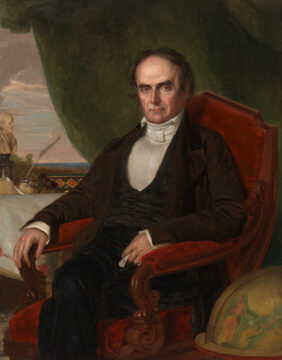
What a wonderful quote. Thirty years of amicable relations destroyed in the course of a three-hour speech. March 7, 1850. Senator Daniel Webster taking his leave of old friends and older ideals as he seeks the higher ground of political peacemaking.
Webster’s story is one of eight Senators’ featured in John F. Kennedy’s 1956 Pulitzer Prize winning book Profiles In Courage. This is as good a time as any to acknowledge what everyone knows: The book is the story of political integrity, but JFK really didn’t author most of it. The bulk of the research and writing was done by his long-time speechwriter Theodore Sorensen. Let’s also acknowledge that JFK’s dad, Joseph P. Kennedy, might have “assisted” in nailing down the prestigious award.
Such is politics, and such is the process of image creation and image burnishing. Profiles In Courage was the end product of a JFK idea inspired by the actions of then-Senator John Quincy Adams, who, in 1807, opposed his Federalist Party’s foreign policy and was denied renomination as a result. Kennedy took the story to Sorensen, asked him to do further research, and Profiles is the result.
The book serves a real political purpose. The Kennedys (father and son) have their eyes on the future and don’t have a lot of time to waste. JFK was under 30 when he was elected to the House in 1946; 35 when elected Senator in 1952. He’s 39 in 1956, surely old enough to set his sights higher. JFK has a great political name, charisma to burn, and even a personal history of physical courage (PT-109), but, still, at that age, the resume is clearly incomplete. A book, especially a well-received one that shows some gravitas, might lead to a VP slot on the 1956 ticket with presumptive nominee Adlai Stevenson. A man could dream and a man could plan, and Profiles was part of the plan.
Is it worth a Pulitzer, Dad intervention or not? Read more »
“Georgia on My Mind” was composed and recorded by Hoagy Carmichael (lyrics by Stuart Gorrell) in 1930. Born in 1899 and dying in 1981, Carmichael composed several hundred songs, many of which became hits, including “Stardust,” “The Nearness of You,” “Heart and Soul,” “Skylark,” and “In the Cool, Cool, Cool of the Evening.” These songs are important contributions to an amorphous and sprawling body of popular song sometimes called “the American Songbook.” The composers of these songs are said to be denizens of “Tin Pan Alley,” at the center of which we find the Brill Building, just north of Times Square at Broadway and 49th Street. For a while Carmichael worked for Southern Music, which had its office in the Brill Building.
Here is Carmichael’s 1930 recording of “Georgia on My Mind.” Many, though by no means all, standards, as they are sometimes called, have the same general form: AABA. Each letter stands for phrase eight measures, or bars, long. The A sections have the same melody and harmony which the B section has a different, and often contrasting, melody (along with its underlying harmony).
This recording begins with a short introduction featuring violinist Joe Venuti, followed by Carmichael coming in on the vocal (c. 0:15). We hit the B section at about 0:51. The B section is often called the “bridge,” presumably because it connects two A sections. Carmichael repeats the A-strain 1:08 starting at 1:08 and ending with a short violin phrase from Venti. Starting at about 1:26 the performance becomes purely instrument. First, we have what sounds like a muted trombone solo, which pretty much sticks to the melody. At 2:01 Venuti plays a violin solo on the bridge. At 2:21 we return to the A-strain with Jack Teagarden on trombone improvising a solo. That ends with the full band playing a chord at 2:39 followed by an 8-bar cornet solo played by Bix Beiderbecke (his last). Venuti, Teagarden and especially Beiderbecke were important musicians in their own right.
Notice Carmichael’s voice. It’s dry, and not particularly mellifluous. His style is relaxed, verging on conversational. It’s a style made possible by technology, a style that would be all but hopeless in live performance without a microphone and amplification. By the same token, it’s a style well-suited to recording, which was still a relatively new medium at the time. It’s a style that owes a lot to Louis Armstrong. Carmichael and Armstrong knew one another and Armstrong performed some of his song’s, e.g. “Rockin’ Chair.” Read more »
Although you are distant
………….. distant distant distant

I can see by your past aura
against a black further distance,
the most distant distance
I can see by your billowing
halo of expanding gasses
fluffed like God’s pillow
that you are ruled by laws
that also rule terrestrial things
I see the colors of your vast radiant shedding
and realize the force behind that shedding
is a predicate for everything that’s blown apart,
comes apart, falls apart, dissipates, uncomplicates,
is broken down, pulled down, unspun—
it’s hard to wrap a mind around
the truth that this is where all things,
every brilliance built and done,
fought and won, are heading,
except in tiny human scope
which mounts a persistent
counterforce of hope
Jim Culleny
11/13/16
Enjoying the content on 3QD? Help keep us going by donating now.
by Dwight Furrow
 In philosophical debates about the aesthetic potential of cuisine, one central topic has been the degree to which smell and taste give us rich and structured information about the nature of reality. Aesthetic appreciation involves reflection on the meaning and significance of an aesthetic object such as a painting or musical work. Part of that appreciation is the apprehension of the work’s form or structure—it is often the form of the object that we find beautiful or otherwise compelling. Although we get pleasure from consuming good food and drink, if smell and taste give us no structured representation of reality there is no form to apprehend or meaning to analyze, so the argument goes. The enjoyment of cuisine then would be akin to that of basking in the sun. It is pleasant to be sure but there is nothing to apprehend or analyze beyond an immediate sensation.
In philosophical debates about the aesthetic potential of cuisine, one central topic has been the degree to which smell and taste give us rich and structured information about the nature of reality. Aesthetic appreciation involves reflection on the meaning and significance of an aesthetic object such as a painting or musical work. Part of that appreciation is the apprehension of the work’s form or structure—it is often the form of the object that we find beautiful or otherwise compelling. Although we get pleasure from consuming good food and drink, if smell and taste give us no structured representation of reality there is no form to apprehend or meaning to analyze, so the argument goes. The enjoyment of cuisine then would be akin to that of basking in the sun. It is pleasant to be sure but there is nothing to apprehend or analyze beyond an immediate sensation.
Those who are skeptical of food and drink as serious aesthetic objects base their arguments on the claim that taste and smell are inferior to vision and audition in providing us with representations of reality. Those who defend the aesthetic potential of food and drink attempt to show that food and drink do provide us with structured representations of the world.
A representation is a mental state, such as a belief, that stands for, refers to, or depicts something else, such as an object in the world. In perceptual experience, a representation specifies the way the world appears to a subject having the experience. Vision is the perceptual modality that arguably gives us the richest representation of reality. To see an apple is to locate it in space individuated from but in relation to other objects in our visual field. And that ability to locate objects is facilitated by assigning properties such as roundness and redness to the apple which appear, not as free-floating properties, but as properties bound to the object. The representation is veridical when the world is in fact as it appears in the representation.
Thus, vision does not present us with a heterogeneous heap of properties; rather properties are part of structured wholes with objects appearing as solid, individuated entities. Vision then is enormously helpful to us as we navigate through the world because it represents the spatial relations between things as well as their boundaries.
Many philosophers have argued that tastes and aromas lack essential elements of a representation. Read more »
by David J. Lobina
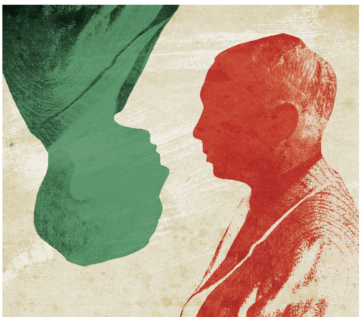
An apparently non-negotiable assumption of modern identity politics, though this was not always the case (see this regarding a certain non-philosopher), is that the individuation of personal characteristics is an intrinsic affair – that is, it is down to an individual to determine and state what they are, this often following from lived experience, and thereby constituting an exclusively internal matter. In a loose sense, this is unexceptional; it is common for one to simply assume the truth of what others say about themselves. After all, one doesn’t expect people to lie about where they are from, their background or what they believe in.
Granted that, the individuation of some personal characteristics does not appear to be entirely and absolutely an intrinsic matter: some identities seemingly depend upon the implicit (and sometimes explicit!) recognition of peers – an extrinsic and relational affair. In such cases, individuation would be partly determined by one’s environment, and thus not too dissimilar to what philosophers call “extensional conditions” (see here for an application to the debate around mental content). This specific point is not usually spelled out in discussions of personal identities, but it does turn up here and there. Something along these lines is implicitly assumed, uncontroversially so, I believe, to the individuation of national identities, the case I shall focus on here – and the argument is likely to generalise. Read more »
by Laurence Peterson

I am writing this on Sunday afternoon, the 29th of September, 2024. The Guardian (UK version) informs me that the Israel Defense Force (IDF) have confirmed that dozens of Israeli aircraft are attacking what they say to be “military targets belonging to the Houthi terrorist regime” in Yemen, and may be preparing for a ground invasion of Lebanon. This is after a week of bombing in Lebanon that has resulted in at least 650 deaths (500 in one day, about a third of the number slaughtered on October the 7th of last year) and the assassination of the leader of Hezbollah, a major political party in Lebanon that has deep roots in the wider Lebanese society. Israel also assassinated a number of other key members of Hezbollah, as well as a senior Iranian official in Lebanon. And this after the remote detonation of pagers and other hand-held devices attached to bombs by Israel that killed maybe a score of people, but wounded thousands, and set much of the country into panic at the thought that any nearby electronic device might blow up and kill or seriously maim simple bystanders. And all this after months of unprecedented carnage and destruction in Gaza and the West Bank.
Not long ago, the incidence of one of these events, or maybe two concurrently, would be enough for me to become very concerned about the possibility of the outbreak of wider war that might just cascade into some kind of confrontation between powers possessing nuclear weapons. Now, though I firmly believe the international situation is as grave as any I have lived through in my 63 years on planet Earth, the constant succession and routinization of these kinds of events these days is taking a kind of toll on me: I am coming, emotionally speaking, to expect that these kinds of happenings that seem to demand immediate and thorough resolution to any sane person will simply pile up, like the bodies of the victims of the tragedies associated with those events. Maybe this is a kind of defense mechanism, like a sort of geopolitical learned-helplessness. Whatever it is, it is disconcerting, disorienting and highly disagreeable. Read more »
by Eleni Petrakou
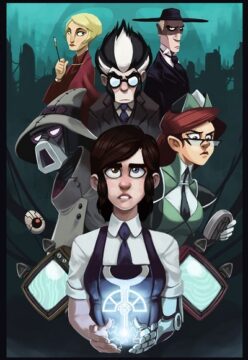
Let this text be a string of anecdotes this columnist has been exposed to, mostly through her work in research and academia. Said work was spread in space and time. The anecdotes, however, come from the western world and its sphere of influence.
*
The first-year student is asking me what to do about the courses by those lecturers who don’t know how to answer her questions.
Five minutes later she’s asking the same thing again.
In the meantime she explained that she’s aware many students lack the background necessary for higher education and of the reasons why. And that yes, she knows she can find lectures from elsewhere online.
*
The senior lecturer is showing me photos of past exam answer sheets. It is clear that some science students don’t know lower high school math.
All of them passed the exams thanks to their marks for the other half of the questions, graded by his co-teaching colleague.
*
Minor detail in Guardian article a few months ago. A seasoned professor says that the quality of studies is going down and for the first time ever she had to fail more than 10% of students.
*
The friend who quit academia is listening to me being concerned about grade inflation. She comforts me by adding that at one university, on her first day at work, she was made to sign an agreement that she wouldn’t ever fail more than 15% of students. Read more »
by Ashutosh Jogalekar
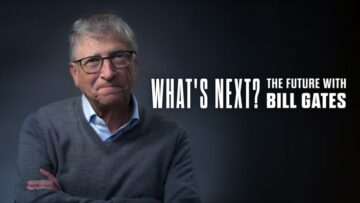 Bill Gates has long been one of the world’s leading optimists, and his new documentary, “What’s Next,” serves as a testament to his hopeful vision of the future. But what makes Gates’s optimism particularly compelling is that it is grounded not in dewy-eyed hopes and prayers but in logic, data, and an unshakable belief in the power of science and technology. Over the years, Gates and his wife Melinda, through their foundation, have invested in a wide array of innovative technologies aimed at addressing some of the most pressing issues faced by humanity. Their work has had an especially transformative impact on underserved populations in regions like Africa, tackling fundamental challenges in healthcare, energy, and beyond. In this new, five-part Netflix series, Gates showcases his trademark pragmatism and curiosity as he engages with some of the most complex and important challenges of our time: artificial intelligence (AI), misinformation, inequality, climate change, and healthcare. His approach stands out especially for his willingness to have a dialogue with those with whom he might strongly disagree.
Bill Gates has long been one of the world’s leading optimists, and his new documentary, “What’s Next,” serves as a testament to his hopeful vision of the future. But what makes Gates’s optimism particularly compelling is that it is grounded not in dewy-eyed hopes and prayers but in logic, data, and an unshakable belief in the power of science and technology. Over the years, Gates and his wife Melinda, through their foundation, have invested in a wide array of innovative technologies aimed at addressing some of the most pressing issues faced by humanity. Their work has had an especially transformative impact on underserved populations in regions like Africa, tackling fundamental challenges in healthcare, energy, and beyond. In this new, five-part Netflix series, Gates showcases his trademark pragmatism and curiosity as he engages with some of the most complex and important challenges of our time: artificial intelligence (AI), misinformation, inequality, climate change, and healthcare. His approach stands out especially for his willingness to have a dialogue with those with whom he might strongly disagree.
Episode 1: “What Can AI do for us?”
In the first episode, Gates delves into the world of artificial intelligence, a topic of both fascination and fear. He speaks with leading researchers at companies like OpenAI, exploring the transformative potential of AI, and even brings in science fiction luminaries like James Cameron to provide a broader cultural context. As Cameron wryly notes, the pace of AI development has made much of science fiction obsolete, an observation that underscores just how quickly this technology is evolving.
But the episode also raises important concerns about the ethical implications of AI. As Gates and the experts explore, AI has the potential to drastically reshape society—not just technologically but emotionally. For instance, the growing reliance on AI for decision-making and even companionship could have unforeseen consequences on human relationships and autonomy. The potential loss of huge slices of jobs to AI is another well-known concern. Ultimately, a recurring theme throughout the episode is the importance of ensuring that AI development keeps a “human-in-the-loop,” emphasizing the need for ethical guardrails as we push the boundaries of what this technology can achieve. Read more »
by Azadeh Amirsadri
 I lived in Philadelphia in 1977 and would go to the Gallery mall on Market Street, a walking distance from our river front apartment. One day, around lunch, I decided to get Chinese food at the food court and looking for a place to sit, I asked two older ladies if I could sit at their table, since the place was packed. As I was picking through the food, separating the celery and water chestnuts, one of the old ladies said “It looks like you are digging for gold.” I not only didn’t understand what she meant,I wasn’t even sure she was talking to me. She pointed to her rings and then to my ring and enunciated “looking for gold” with a smile. I had a game I played when I wasn’t in the mood to speak English, so I said I didn’t understand, which was true in this case. She pointed to my ring and said “You are looking for gold” and again I smiled politely and went on separating the food and trying not to make eye contact and not to engage. She told her friend “I wonder where she is from” and later “I bet she is rich because she is wearing a lot of jewelry” and they went on talking about me and I went on pretending I didn’t understand what they were saying.
I lived in Philadelphia in 1977 and would go to the Gallery mall on Market Street, a walking distance from our river front apartment. One day, around lunch, I decided to get Chinese food at the food court and looking for a place to sit, I asked two older ladies if I could sit at their table, since the place was packed. As I was picking through the food, separating the celery and water chestnuts, one of the old ladies said “It looks like you are digging for gold.” I not only didn’t understand what she meant,I wasn’t even sure she was talking to me. She pointed to her rings and then to my ring and enunciated “looking for gold” with a smile. I had a game I played when I wasn’t in the mood to speak English, so I said I didn’t understand, which was true in this case. She pointed to my ring and said “You are looking for gold” and again I smiled politely and went on separating the food and trying not to make eye contact and not to engage. She told her friend “I wonder where she is from” and later “I bet she is rich because she is wearing a lot of jewelry” and they went on talking about me and I went on pretending I didn’t understand what they were saying.
Another time, I was at the window seat of a domestic flight and didn’t want to speak to anyone. The couple next to me was anxious and they were catastrophizing about their luggage not arriving at their destination, about the drinks and snacks not being enough and were trying to reel me into their conversation. I looked at them, shook my head and smiled, and pretended I didn’t understand them. I was trying to sleep anyway, but when the flight attendants came with the drinks cart, the couple got agitated and woke me up saying Coke? Coke? Then they talked about how I will miss getting a drink, and returned to all the bad things that were about to happen.
Learning English was rather easy for me; perhaps because my mother had told me from an early age that I was good with languages. Also, speaking two other languages made it easier to learn a new language. I attended classes in Falls Church, VA in a trailer behind an elementary school with other adults who were new to the country. Our group was made up of a lot of Vietnamese people who had arrived as boat people, Central Americans running from civil wars, and of course Iranians. Our teacher was Mrs. B and I was amazed at how cool it was to just have a letter for a last name. Of course, I had no idea that ESL teachers do this to simplify their longer names for their students who are already struggling with learning a new language. The Iranians in class were mostly kind to each other, respecting our social norms, yet also very competitive. Since we couldn’t communicate with the other groups, we kept our dramas within our own. Read more »
by Jeroen van Baar

In the chart-topping podcast The Rest is History, British historians Tom Holland and Dominic Sandbrook discuss key events from the past at great length and in sumptuous depth. I was listening to their fourth episode on the French Revolution when a detail caught my ear. Part of the reason the Revolution could occur, Tom and Dominic argued, is that a nasty opinion publique had taken hold in late-eighteenth-century Paris. Pamphlets filled with inflammatory rumors were sold by the tens of thousands and read aloud on street corners. Some of them spread fables about the alleged sexual escapades of the young queen Marie Antoinette, which eroded the authority of the monarchy and set the stage for its bloody demise.
It is all too reminiscent of public opinion today. In the recent Trump-Harris presidential debate, for instance, Trump alleged that Democrats were condoning post-birth abortions. “Her Vice-Presidential pick […] says execution after birth is OK,” Trump said. And later: The “former governor of Virginia said we put the baby aside and then we determine what we want to do with the baby.”
To those uninitiated in Republican propaganda, the comment must have sounded like yet another ridiculous falsehood made up on the fly by the former president. But as a political neuroscientist, I recognized it from five years ago. In 2019, I was a researcher at Brown University studying how the brains of political partisans color their perceptions (of an inauguration crowd, perhaps). 43 committed Democrats and Republicans watched political videos in our brain scanner. One of the videos we used was a PBS news segment on abortion, in which then-Virginia Governor Ralph Northam, a pediatrician and a Democrat, described what happens in the tragic scenario when a fetus is not viable outside the womb: resuscitation is attempted if the parents so desire. Despite numerous clarifications from Northam, this was gleefully interpreted by Republicans to mean that Democrats condone “legal infanticide”. The fact that Trump is still touting this conspiracy theory five years later speaks to its effectiveness at riling his base.
In our study, we discovered that neural processing of the PBS video was more similar between two people who had the same political orientation than across the aisle. Why? Read more »
by Nils Peterson
Galway Kinnell said all good writing has a certain quality in common, “a tenderness toward existence.” I agree and feel that one of the great maladies of our age is the communal loss of this feeling. Wendell Berry says “people exploit what they have merely concluded to be of value, but they defend what they love, and to defend what we love we need a particularizing language, for we love what we particularly know.”
Here’s the first part of a poem of mine:
Rain steady on the roof. Far shore lost. Sea quiet,
gray, introspective – like me, I think, entering
from stage left. This is what we’ve made language for,
to enter the world’s drama as player, not just reflex
towards food or away from the saber-tooth.
So now to the enemy, Word Loss.
Robert Bly in his great anthology News of the Universe recounts and comments on the dreams of Descartes as told by Karl Stern in Flight from Women:
In his third dream some terrifying things happened. A book disappeared from his hand. A book appeared at the end of the table, vanished, and appeared at the other end. And the dictionary, when he checked it, had fewer words in it than it had a few minutes before. I suspect that we are losing some of the words that inhabit the left side; our vocabulary is getting smaller. The disappearing words are probably words such as “mole,” “ocean,” “praise,” “whale,” “steeping,” “bat-ear,” “wooden tub,” “moist cave,” “seawind.”
I thought of this passage when I read this account of the new Oxford Junior Dictionary in a remarkable essay by Robert Macfarlane introducing his new book, Landmarks:
The same summer I was on Lewis [an island in the Hebrides], a new edition of the Oxford Junior Dictionary was published. A sharp-eyed reader noticed that there had been a culling of words concerning nature. Under pressure, Oxford University Press revealed a list of the entries it no longer felt to be relevant to a modern-day childhood. The deletions included acorn, adder, ash, beech, bluebell, buttercup, catkin, conker, cowslip, cygnet, dandelion, fern, hazel, heather, heron, ivy, kingfisher, lark, mistletoe, nectar, newt, otter, pasture, and willow. The words taking their places in the new edition included attachment, block-graph, blog, broadband, bullet-point, celebrity, chatroom, committee, cut-and-paste, MP3 player, and voice-mail. As I had been entranced by the language preserved in the prose‑poem of the “Peat Glossary”, so I was dismayed by the language that had fallen (been pushed) from the dictionary. For blackberry, read Blackberry.
Macfarlane is a British naturalist whose book The Wild Places is a description of his hours and days spent in what is left of the wild. Sometimes the wild is closer than you think. Sometimes remote. It is a remarkable book that I can’t recommend too strongly. His book Landmarks is even more remarkable. It is about the loss of the language of the land that our ancestors who worked closely in it and with it had to describe it. Read more »
 Sughra Raza. Meadowstream Afternoon, Maine, 2001.
Sughra Raza. Meadowstream Afternoon, Maine, 2001.
Digital photograph.
Enjoying the content on 3QD? Help keep us going by donating now.
by Tim Sommers
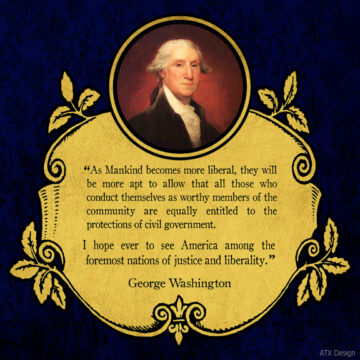 By all accounts, Alexandre Lefebvre’s new book, Liberalism as a Way of Life, is odd. For one thing, as Stephen Holmes points out, Lefebvre oscillates between saying that liberalism is so pervasive and all-encompassing that “Love it or hate it, we all swim…in liberal waters” – and emphasizing the need to evangelize and perform spiritual exercises to grasp the real meaning of deep liberalism. But as Holmes memorably puts it, “Fish do not aspire to wetness.”
By all accounts, Alexandre Lefebvre’s new book, Liberalism as a Way of Life, is odd. For one thing, as Stephen Holmes points out, Lefebvre oscillates between saying that liberalism is so pervasive and all-encompassing that “Love it or hate it, we all swim…in liberal waters” – and emphasizing the need to evangelize and perform spiritual exercises to grasp the real meaning of deep liberalism. But as Holmes memorably puts it, “Fish do not aspire to wetness.”
Here’s another bit of oddness. Lefebvre calls a spin-off article advertising the book “Rawls the Redeemer.” This is a bit like calling the Pope a secularist.
The thrust of Lefebvre’s argument seems to be this:
“Liberals too quickly adopt [a] narrow institutionalist definition [of liberalism] and assume that liberalism is an exclusively legal and political doctrine. Liberals, in other words, fail to recognize not just what liberalism has become today (a worldview and comprehensive value system) but who they are as well: living and breathing incarnations of it.”
This is not a book review, but to the extent that this adequately captures Lefebvre’s project, I am going to explain what I think is wrong with it and what the limit is on liberalism as a way of life. Let me start with what Lefebvre would no doubt describe as a narrow institutionalist definition of liberalism.
Liberalism is the view that the first principle of justice is that everyone is entitled to certain basic rights, liberties, and freedoms – such as freedom of religion, of conscience, of speech, assembly, the rule of law, and the right to participate as an equal in political and social life. People are not entitled to quantitatively “the most liberty possible” – or even “the most liberty compatible with like liberty for others.” It’s not clear what that could even mean. How do you quantify, or weigh, the freedom to swing your arms against the freedom to publish attacks on the government or the freedom to hang out with whoever you want? What people are entitled to as a matter of justice is a set of liberties adequate to allow them to develop, revise, and pursue their own understanding of the good life, the good, and justice. Roughly, liberalism is about, as Mill put it, everyone having liberties adequate to ensure their own right to pursue their own good in their own way.
Here’s a tempting, but mistaken way to justify liberal basic liberties. Call it the autonomy argument. The liberal liberties are the liberties required for people to be free and autonomous. We prioritize them because we prioritize freedom and autonomy. They reflect our political judgment that autonomy is the most important political value.
This won’t do, of course, since there is no general agreement that autonomy or freedom is the highest good. Read more »
by Ed Simon
Demonstrating the utility of a critical practice that’s sometimes obscured more than its venerable history would warrant, my 3 Quarks Daily column will be partially devoted to the practice of traditional close readings of poems, passages, dialogue, and even art. If you’re interested in seeing close readings on particular works of literature or pop culture, please email me at [email protected].
 Enjambment is often an invitation to surprise. The line following a deftly deployed line break can serve as an answer to a question; it can, when done well, have an oracular quality, the feeling of a koan. Take for example Cameron Barnett’s powerful poem “Emmett Till Haunts the Library in Money, MS” published in his 2017 collection The Drowning Boy’s Guide to Water. Written in the voice of Till, the fourteen-year-old Black child from Chicago lynched in Mississippi in 1955 whose murder drew attention to anti-Black violence in the United States, Barnett’s poem uses line breaks as a means to defer meaning between stanzas, and thus to generate a heightened sense of awareness. Taking as its conceit the otherworldly haunting of the Money, Mississippi library, a liminal, bardo-like space where Till’s consciousness is able to narrate even after death, the narrator’s individual thoughts are often divided across stanzas, a line break functioning as a type of psychic pause before the thought is completed. For example, in the final line of the first stanza in a three-stanza poem, Barnett writes “Mamie always preached,” completing that thought at the first line of the second stanza with “good posture, so I sit straight at least.”
Enjambment is often an invitation to surprise. The line following a deftly deployed line break can serve as an answer to a question; it can, when done well, have an oracular quality, the feeling of a koan. Take for example Cameron Barnett’s powerful poem “Emmett Till Haunts the Library in Money, MS” published in his 2017 collection The Drowning Boy’s Guide to Water. Written in the voice of Till, the fourteen-year-old Black child from Chicago lynched in Mississippi in 1955 whose murder drew attention to anti-Black violence in the United States, Barnett’s poem uses line breaks as a means to defer meaning between stanzas, and thus to generate a heightened sense of awareness. Taking as its conceit the otherworldly haunting of the Money, Mississippi library, a liminal, bardo-like space where Till’s consciousness is able to narrate even after death, the narrator’s individual thoughts are often divided across stanzas, a line break functioning as a type of psychic pause before the thought is completed. For example, in the final line of the first stanza in a three-stanza poem, Barnett writes “Mamie always preached,” completing that thought at the first line of the second stanza with “good posture, so I sit straight at least.”
That divided line – “Mamie always preached” – could syntactically and grammatically be a complete sentence, and theoretically a complete thought, even while it raises the brief question in the reader of “What did Mammie always preach?” The same effect is used in the final line of the second stanza, wherein Till says “You can’t judge,” another theoretically complete thought, which is finished in the first line of the final stanza with “a book by its facts or flaps or back cover.” That line is itself interesting in that Barnett amends the cliché about books and their covers by anatomizing the structure of the book, which he then goes on to contrast with Till’s own state, for even if books are not to be judged, a “black boy/is the title and illustration staring you in the face.” The poem from The Drowning Boy’s Guide to Water is able to masterfully toggle between its social and political concerns – which themselves are, remember, about a horrific crime – while imbuing the lyric with a supernatural sense. Integral to this feeling is Barnett’s treatment of those final lines in each stanza, for it gives Till’s thoughts – from the afterlife and presumably mediated through whatever gauzy filament defines the experience of haunting – a slightly delayed, almost staccato rhythm, as if in a dream state. Read more »
by Adele A.Wilby
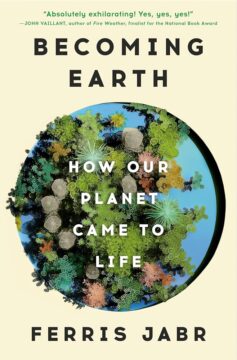 Books on nature abound. More recently, physicist Helen Czerski’s deep knowledge of the seas functioning as an ‘ocean engine’ in Blue Machine: How the Ocean Shapes the World, elevates our understanding of the ocean and provides us with a new appreciation of its integral role in the Earth’s ecosystem. Volcanologist Tamsin Mather ‘s Adventures in Volcanoland: What Volcanoes Tell Us About the World and Ourselves is also another beguiling journey into the awesome history of the ‘geological mammoths’ that are volcanoes and their dynamics, that have changed the surface of the Earth and impacted on its environment.
Books on nature abound. More recently, physicist Helen Czerski’s deep knowledge of the seas functioning as an ‘ocean engine’ in Blue Machine: How the Ocean Shapes the World, elevates our understanding of the ocean and provides us with a new appreciation of its integral role in the Earth’s ecosystem. Volcanologist Tamsin Mather ‘s Adventures in Volcanoland: What Volcanoes Tell Us About the World and Ourselves is also another beguiling journey into the awesome history of the ‘geological mammoths’ that are volcanoes and their dynamics, that have changed the surface of the Earth and impacted on its environment.
But these books are more than the science of the specialist subject being explored: they have literary value also. The authors are to be lauded for the elegance of their prose that make the books not only fascinating and illuminating, but accessible and a real joy to read. Deeper knowledge of the planet’s ecosystems is made available to us, and they excite a sense of wonder and awe at the complexity of life on planet Earth. Cumulatively, these books highlight just how far the interrelatedness of different aspects of the natural world is. Ferris Jabr’s Becoming Earth: How Our Planet Came to Life is in that tradition. His book is a real feast for readers of books about life on Earth and for those who appreciate literary work: Jabr is not only knowledgeable, but a master of lyrical prose also.
Jabr’s book does not specialise on one aspect of the planet, such as volcanoes or the oceans. Instead, Jabr is concerned about the planet and how it came to ‘life’. In that sense he breaks with what could be considered the more conventional wisdom that posits life on the planet as being subject to its environment, and the Darwinian scientific paradigm that the changing demands of the environment dictate how life evolves and those best able to adapt will survive. Instead, Jabr focuses on what he considers the ‘underappreciated twin’ of evolution and posits a more interrelated view that ‘life changes the environment’. His book is, he says, ‘an exploration of how life has transformed the planet, a meditation on what it means to say that Earth itself is alive’.
To claim that the ‘Earth itself is alive’ truly does demand that a reader stretch the perimeters of conventional views of the Earth as an inanimate planet where the conditions for life were possible. Although the earliest iterations of an understanding of the planet as a living entity were mooted centuries ago, it is only since the 1960s when scientist and inventor James Lovelock and his association with the little known and unrecognised Dian Hitchcock, introduced the ‘Gaia hypothesis’ and later developed by American biologist Lynn Margulis, that more seriousness was given to the idea. Initially scientists subjected the ‘hypothesis’ that ‘life transforms the planet and is integral to its self-regulating process’ to rigorous criticism, but it remains, according to Jabr, the fundamental tenet in earth system science today. Read more »
A conversation between Philip Graham and Michele Morano:
 Michele Morano: Philip Graham has long been one of my favorite writers to read and to teach because of his insights, humor, and ability to challenge what we think we see. A versatile author of fiction and nonfiction— whose work has appeared in The New Yorker, Paris Review, Washington Post Magazine, McSweeney’s and elsewhere—Graham chooses subjects that explore the rippling surfaces and deep currents of domesticity at home and abroad. Each of his books illustrates Graham’s powers of perception, interpretation, and experimentation, along with his irrepressible interest in people, the more varied and unlike himself, the better. And each has contributed to the perspective of his latest project.
Michele Morano: Philip Graham has long been one of my favorite writers to read and to teach because of his insights, humor, and ability to challenge what we think we see. A versatile author of fiction and nonfiction— whose work has appeared in The New Yorker, Paris Review, Washington Post Magazine, McSweeney’s and elsewhere—Graham chooses subjects that explore the rippling surfaces and deep currents of domesticity at home and abroad. Each of his books illustrates Graham’s powers of perception, interpretation, and experimentation, along with his irrepressible interest in people, the more varied and unlike himself, the better. And each has contributed to the perspective of his latest project.
Graham’s eighth book, the novel What the Dead Can Say, is being released in serialized form in fall 2024, or perhaps it’s more accurate to say that it’s continuing to be released, in a process that began in June of 2023. If that seems mysterious, imagine happening upon a FREE copy of this book, distributed in a unique way over the last year. It’s beautifully designed, printed on quality paper, and boasts an enticing cover with no author’s name, content summary, or origin story. A straight-up ghost tale, this delightful novel takes readers on a journey through life as we know it with an otherworldly narrator who, right here in our midst, cannot help but collect other ghosts’ stories as she moves through the mortal world. It’s a beautiful, fascinating—dare I say haunting?— book for which Graham chose not to follow the traditional publishing path, though his seven previous books have been published by Scribner, Random House, William Morrow, Warner Books and the University of Chicago Press.
In a recent conversation conducted via email, I asked Graham about this choice, along with many others that resulted in the production and dissemination of a terrific, uniquely curated, work of literature.
MM: Philip, would you begin by tracing for us how you came to write a ghost story? What was the inspiration for this book, and what sorts of challenges (interior or exterior) did you encounter while writing it?
Philip Graham: First, thank you, Michele, for all those kind words. I’m a great admirer of your own work, and I’m really looking forward to our conversation.
The inspiration behind What the Dead Can Say goes back thirty years, to the summer of 1993, when I gave my father a funeral in absentia in a small West African village. Read more »
by Steve Szilagyi

Herb Gobel opened Trophy Recording in downtown Boston in 1948. It was a state-of-the-art studio. Perfect for the artists Herb idolized. Big bands like Artie Shaw and Stan Kenton. Vocalists like Frank Sinatra and Peggy Lee. An era of composers, arrangers and sight-reading musicians. By the time I saw Trophy Recording in 1972, the place had gone to ruin. Cobwebs on the music stands. Cigarette burns and coffee stains on the control board. A flock of pigeons roosting in the ceiling. The proprietor himself didn’t look much better. Pale, bleary-eyed, tie dangling under the open collar of his dingy white shirt.
Herb looked like a man who didn’t know what hit him. But appearances deceive. Herb knew quite well what hit him. Rock ‘n’ Roll.
“It shouldn’t have happened,” he said, pulling a whisky bottle from under the control board. “It should have come and gone. Like all the other novelty fads” – meaning calypso, Hawaiian and “that Desi Arnez stuff.”
No union musicians. Rock ‘n’ Roll was a joke at first. The musical establishment put Be-Bop-a-Lu-La into the same category as Aba Dabba Honeymoon. Guys like Herb thought it would be absorbed into the musical mainstream. Rock ‘n’ roll songs would be arranged for horns, strings and accordions, and life would go on. No union musicians would lose their jobs.
But that didn’t happen. To survive, Herb had to push the music stands into the corner and learn how to record garage bands. It wasn’t hard. Suburban kids with new guitars weren’t very demanding. In time, Herb stopped seeing recording as a craft, and came to view it as a grift. Read more »